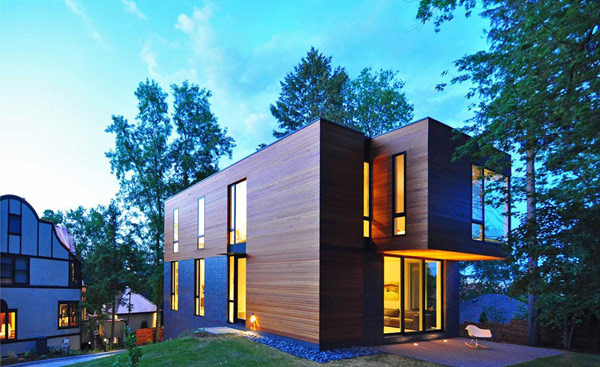current feature: new approaches for planning and participation
/Planning projects abound in Bermuda at present. Some are more imaginary than real but, importantly, we are being asked for our opinions on a few of them. Is the method of asking imaginative? Attention grabbing? Meaningful? Not really. Can we do better in getting the island's community engaged and participating in discussions and actions that impact our way of life? Yes, we can and here's how.
The Venice Architectural Biennale is taking place right now through 25 November 2012 on the theme Common Ground. In the words of the Biennale director, architect David Chipperfield:
I wanted to encourage my colleagues to react to the prevalent professional and cultural tendencies of our time that place such emphasis on individual and isolated actions. I encouraged them instead to demonstrate the importance of influence and of the continuity of cultural endeavour, to illustrate common and shared ideas that form the basis of an architectural culture.
Love it or hate it, the US has received an Honourable Mention for National Participation from the jury for its Pavillion, SpontaneousInterventions: design actions for the Common Good. As self-described:
Spontaneous Interventions [frames] an archive of compelling, actionable strategies, ranging from urban farms to guerilla bike lanes, temporary architecture to poster campaigns, urban navigation apps to crowdsourced city planning. These efforts cut across boundaries, addressing architecture, landscape, infrastructure, and the digital universe, and run the gamut from symbolic to practical, physical to virtual, whimsical to serious. But they share an optimistic willingness to venture outside conventional practice and to deploy fresh tactics to make cities more sustainable, accessible, and inclusive.
The Pavillion displays 124 innovative and actionable projects for our consideration. Below are three that can be implemented in Bermuda - there are more; check the Pavillion website. Are you up for the challenge?
Project descriptions courtesy of spontaneousinterventions.org.
 image: spontaneousinterventions.org I Wish This Was
image: spontaneousinterventions.org I Wish This Was
Vacant storefronts are an urban mainstay. But while passersby may dream of what they wish would fill the void, rarely do they get any say in the matter. Combining street art and city planning, I Wish This Was is an interactive public art project that invites residents to voice their ideas about improving the neighborhood. Trained in architecture, graphic design, and urban planning, Candy Chang posts grids of blank stickers on vacant buildings so that residents can write their thoughts on future use, provid- ing a fun, low-barrier tool to spark civic engagement and a way to showcase the city’s collective imagination. The project was launched in New Orleans, but stickers are available online and have been appearing in cities around the world.
Imagination Playground
When architect David Rockwell started spending time in playgrounds with his young children, he was  image: spontaneousinterventions.org disturbed by the lack of imagination and variation in the way kids interact with standardized playground equipment. He spent five years developing the Imagination Playground, seeking private-public partnerships to see it realized. Inspired by Froebel blocks and adventure playgrounds, the Imagination Playground features a wide range of elements that allows children to create their own environments and their own course of play. Since the first Imagination Playground opened in Manhattan (with the support of several city agencies), Rockwell has developed a more portable, scalable version – packed into a cart or box – that can quickly transform small, unused spaces into dynamic playgrounds. It has been deployed in hundreds of locations worldwide, including Haiti and Bangladesh.
image: spontaneousinterventions.org disturbed by the lack of imagination and variation in the way kids interact with standardized playground equipment. He spent five years developing the Imagination Playground, seeking private-public partnerships to see it realized. Inspired by Froebel blocks and adventure playgrounds, the Imagination Playground features a wide range of elements that allows children to create their own environments and their own course of play. Since the first Imagination Playground opened in Manhattan (with the support of several city agencies), Rockwell has developed a more portable, scalable version – packed into a cart or box – that can quickly transform small, unused spaces into dynamic playgrounds. It has been deployed in hundreds of locations worldwide, including Haiti and Bangladesh.
 image: spontaneousinterventions.orgStreetfilms
image: spontaneousinterventions.orgStreetfilms
We all know how powerful a well-made viral video can be to advance a cause. Streetfilms has harnessed that power to promote smart transportation design and policy and its potential to create happy, healthy places to live. The New York nonprofit Streetfilms (sister organization of OpenPlans) has produced over 400 short films on subjects ranging from bikeway design to sustainable transport to parking reform, shot in locations all over the world. One of its most-viewed films is about Ciclovía, a weekly “open streets” event in Bogotá, Colombia, in which over 70 miles of streets are closed for leisurely cycling. The video has received over 200,000 hits and has helped advocates everywhere to convince their own city officials to implement ciclovías.





